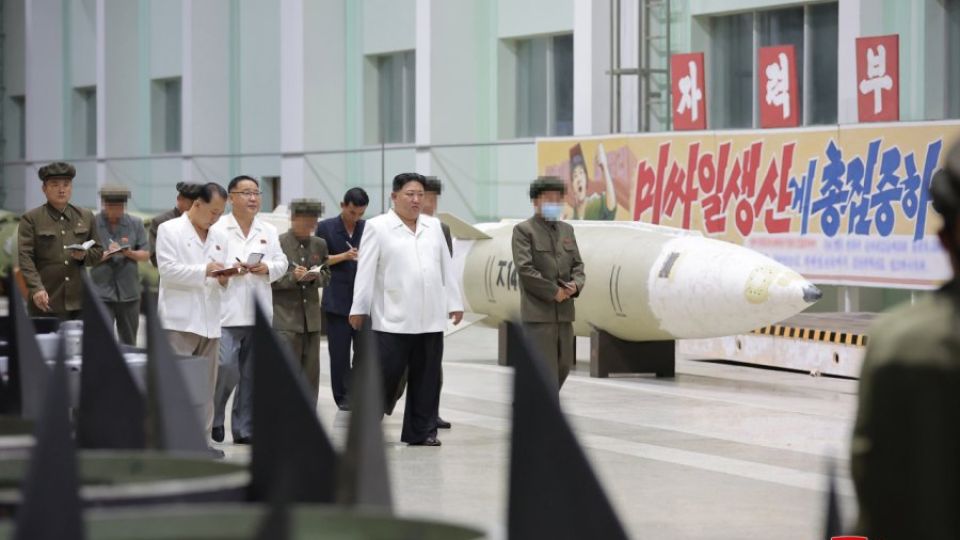August 23, 2023
SEOUL – North Korea has notified Japan of its plans to launch a satellite between Thursday and Aug. 31, sparking immediate condemnation from Seoul and Tokyo who called it a clear violation of UN Security Council resolutions.
The launch window also aligns with the ongoing 11-day joint, interagency Ulchi Freedom Shield military exercise between South Korea and the US, which is scheduled to continue until the end of August and is accompanied by more than 30 field training exercises.
North Korea has identified three projected drop zones for rocket stages and other residual rocket components, the Japan Coast Guard said Tuesday. It will be the second attempt in three months after it failed to put its first-ever homegrown spy satellite into orbit.
The first zone is in the waters to the west of the Korean Peninsula, the second one in the East China Sea, and the third one is in the waters east of the Philippines’ Luzon Island. The designated areas fall outside of Japan’s exclusive economic zone.
The drop zones mirror those North Korea had earlier stipulated for the launch of a so-called military reconnaissance satellite in May. This implies that the trajectory of the forthcoming satellite launch is likely to follow a pattern akin to the prior launch.
North Korea launched a space launch vehicle called Chollima-1, which reportedly carried a military reconnaissance satellite named Malligyong-1, on May 31. The launch took place at the Sohae Satellite Launching Station in the Tongchang-ri area of North Pyongan Province.
But after it was launched, the launch vehicle carrying the satellite crashed into waters west of the South Korean island of Eocheongdo in the West Sea soon afterwards.
On the same day, Pyongyang promptly acknowledged the failure of its attempt but said it would conduct another launch “as soon as possible” in a statement released through state media. North Korea said the launch vehicle lost propulsion due to an abnormal startup of the second-stage engine.
South Korea’s Foreign Ministry in Seoul urged North Korea to immediately retract its plan, expressing “deep regret” over North Korea’s announcement, which comes despite continuous warnings from the international community.
“North Korea’s purported satellite launch is a clear illegal act that constitutes a flagrant violation of UN Security Council resolutions, which explicitly prohibit any launches employing ballistic missile technology. Such an act can never be justified by any excuses put forth by North Korea,” Lim Soo-suk, a spokesperson for Seoul’s Foreign Ministry, told a televised regular press briefing.
Space launch vehicles and ballistic missiles share certain technologies that can be identical or interchangeable. The primary distinction lies in the payload — space launch vehicles typically carry a satellite while a missile carries a warhead.
“The South Korean government will sternly respond to North Korea’s unauthorized provocations in close coordination with the US and Japan and in tandem with the international community,” Lim said.
Prime Minister Fumio Kishida’s office further condemned North Korea’s violation of the applicable UN Security Council resolutions, emphasizing the necessity of a collaborative trilateral approach.
At the current stage, the “primary determining factor” for selecting the launch date of a satellite would be the weather conditions, a senior official from the Unification Ministry — who wished to remain anonymous — said during a closed-door briefing.
But if North Korea finds the weather conditions on the first day of the designated time frame conducive for launching, it is likely that the launch will take place on Thursday in light of its past track record, including the latest launch on May 31.
Yang Moo-jin, the president of the University of North Korean Studies in Seoul, commented that North Korea’s satellite launch aims to accomplish both internal and external objectives.
“Politically, the launch will not only serve as a cannon salute to commemorate the Sept. 9 anniversary but also holds significance in fulfilling the late Chairman Kim Jong-il’s dying injunction to establish dominance in the satellite sector on the occasion of the Day of Songun,” Yang said.
Sept. 9 is the 75th anniversary of North Korea’s founding. The Day of Songun is an annual public holiday observed on Aug. 25 to commemorate the inception of the North’s “military-first” policy, known as Songun.
“From a military perspective, the launch aims to undermine the agreements established during the Camp David summit and engage in tit-for-tat saber-rattling in response to Ulchi Freedom Shield.”
North Korea’s announcement of the satellite launch came just days following the Camp David summit on Aug. 18, where leaders from South Korea, the US and Japan reaffirmed their commitment to bolstering security and military cooperation to counter nuclear and missile threats posed by North Korea.
In an English-language commentary, North Korea’s state-run Korean Central News Agency on Tuesday denounced South Korea and the US for staging military exercises particularly after the three leaders met to “detail, plan and formulate the nuclear war provocation on the Korean Peninsula.”
Pyongyang said the “prevailing situation requires the Korean People’s Army to take the initiative, offensive and overwhelming action for a war.”
“The will to punish the hostile forces threatening the sovereignty of our state and the right to existence of our people for decades is waiting for a moment of percussion,” North Korea warned.


